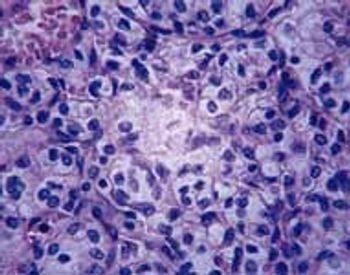
Research on using sublingual detomidine in horses to produce mild sedation is getting some serious attention.
Dr. Blake is a freelance technical editor and writer in Lawrence, Kansas.

Research on using sublingual detomidine in horses to produce mild sedation is getting some serious attention.

Researchers at Colorado State University with cooperation from the USDA have conducted a cross-sectional study looking at the state of biosecurity at Colorado equine boarding facilities and developed a questionnaire for self-evaluation of infectious disease control programs.

A recently published study evaluated the use of a commercially available point-of-care relaxin test for its sensitivity and specificity for pregnancy detection in cats.

The history of canine influenza virus began with the identification of infections in racing greyhounds, directing research that defined canine influenza virus (CIV), a variant of equine influenza virus with a unique genetic signature capable of being transmitted from dog to dog.

The goal of this study was to describe the farrier services currently available at these private hospitals with the expectation that the findings will increase the quality and availability of these services and improve veterinarian-farrier relationships.

Investigators from the University of Tennessee's College of Veterinary Medicine recently published their findings evaluating tumor response and overall survival rate and time for dogs with nonresectable MCTs treated with masitinib.

Tackling painful corneal ulcerations in horses is a common occurance.

When veterinarians think about tooth resorption, the image is generally of a feline patient.

A study reported the results of diagnostic tests and a novel treatment approach for nuchal bursitis in four horses.

Do we all interpret cytology findings the same way?

Researchers recently investigated the accuracy of a single cortisol concentration measurement to monitor dogs receiving trilostane for hyperadrenocorticism.

In a recent study, Iowa State University researchers delved into the art of administering supplemental oxygen to neonatal foals.

Guidelines for feline immunodeficiency virus and feline leukemia virus testing, focusing on kittens.

Details on a recently published a set of guidelines for the long-term use of nonsteroidal anti-inflammatory drugs in cats.

Despite the availability of canine vaccines against various serovars, this zoonotic disease has seemed to be making a comeback.

A look at how several antifungal agents and delivery vehicles affect equine keratocytes.

The results of a University of Wisconsin randomized controlled trial assessing the efficacy of retrobulbar analgesia on the control of postoperative pain in dogs undergoing enucleation was recently published.

A workshop at the Centers for Disease Control and Prevention brought together specialists in veterinary parasitology and human internal medicine and vector-borne infectious disease to address Lyme borreliosis.

The use of a modified spirometric monitoring system for anesthetized equine patients was recently evaluated.

North Carolina State University's College of Veterinary Medicine recently published a retrospective study looking at the demographics of horses donated to their Equine Health Center from 1996 to 2008.

A recent study looked at the effects of gabapentin for use as adjunctive perioperative pain control in dogs.

A Q&A with veterinary internist Barrak Pressler

A study in 11 clinically normal adult horses evaluated whether triamcinolone acetonide, a commonly used corticosteroid for treating navicular syndrome, would diffuse from the distal interphalangeal joint into the navicular bursa.

A new study has taken the first steps toward looking at alternative forms of oral medications for cats and the perceived ease of administration and patient tolerance.

A Q&A with veterinary endocrinologist Edward C. Feldman

Spironolactone, a selective aldosterone inhibitor, has been shown to decrease mortality in people with congestive heart failure.

Correlating the progression or severity of disease with a specific biologic substance can greatly influence the ability to predict outcome.

More and more, veterinarians are being asked to answer questions regarding potentially zoonotic diseases. When it comes to bartonellosis, the answers can be particularly tough to formulate because of the disease?s frequently vague or absent clinical signs and the difficulty in identifying and controlling the infection.

In an article recently published in Veterinary Clinics of North America: Small Animal Practice, Drs. Byron Blagburn and Michael Dryden provide a comprehensive overview of flea and tick biology, treatment, and control.

To more objectively categorize patients and to complement the current classification system, the American College of Veterinary Internal Medicine (ACVIM) Specialty of Cardiology consensus panel has developed a set of guidelines for the diagnosis and treatment of CVHD.